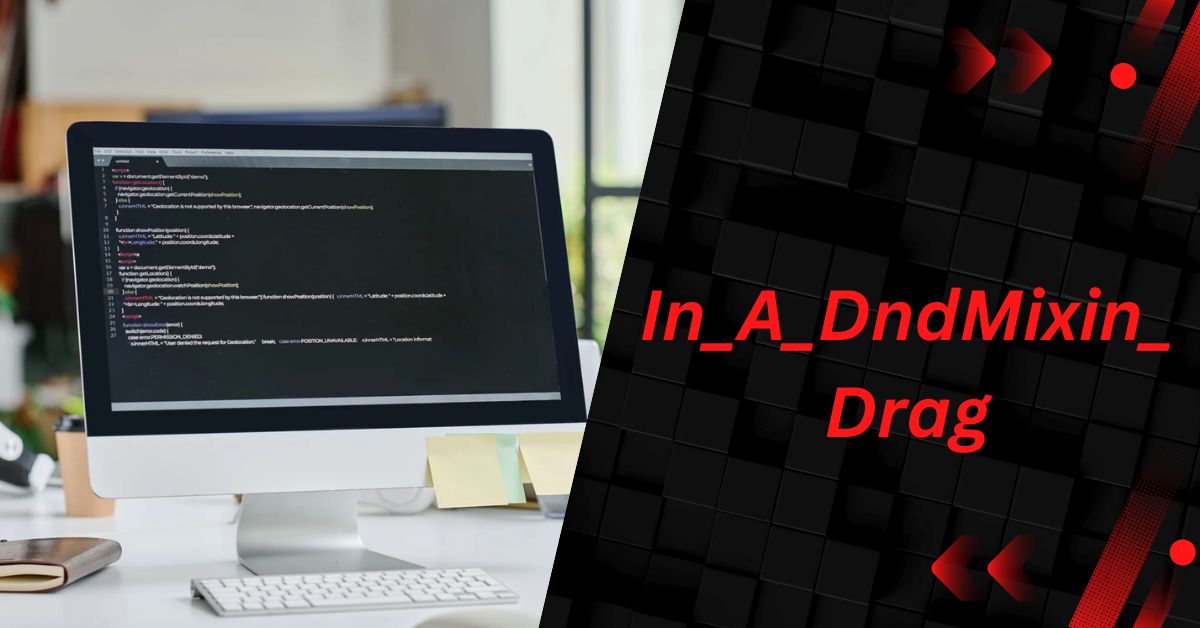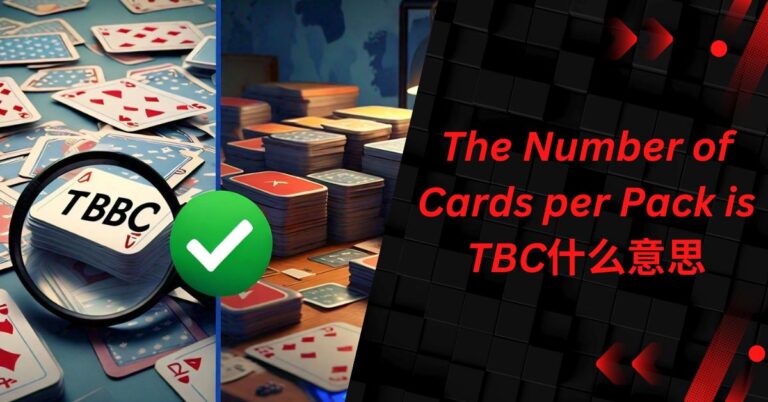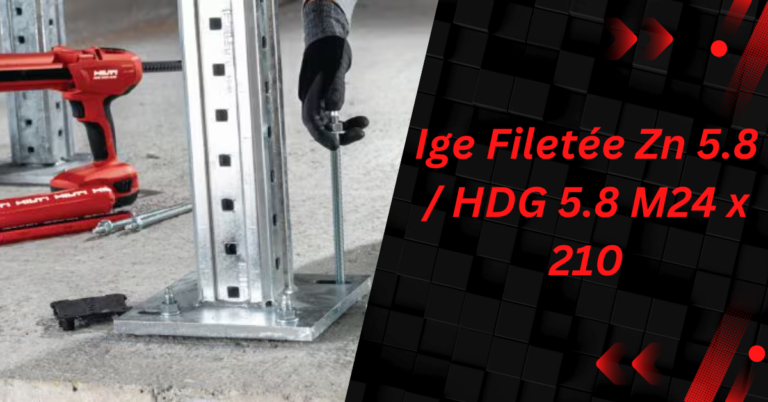In_A_DndMixin_Drag – Implementing Drag-and-Drop Functionality in Python
Drag-and-drop functionality is a crucial feature in many modern software applications. It allows users to interact with the application in a more intuitive way by dragging and dropping items, such as files, text, or other objects, from one place to another within the interface.
Implementing this feature in Python can be challenging, especially for beginners. However, with the use of the “in_a_dndmixin_drag” tool, this process can be simplified significantly.
This article will delve deep into the concept of “in_a_dndmixin_drag,” its implementation, and how it can enhance the user interface of your Python applications.
Understanding Drag-and-Drop Functionality
What is Drag-and-Drop?
Drag-and-drop is a common graphical user interface (GUI) action that allows users to move objects from one location to another within an application.
By clicking on an object, holding down the mouse button, and moving the mouse, users can drag the object to a different location. Releasing the mouse button drops the object in the desired spot.
Why is Drag-and-Drop Important?
Drag-and-drop functionality enhances the user experience by making interactions more intuitive and efficient. It simplifies tasks such as organizing files, rearranging items, and transferring data between different parts of an application.
For example, in a file management system, users can quickly move files between folders using drag-and-drop, rather than relying on more complex commands.
Applications of Drag-and-Drop
Drag-and-drop is widely used in various applications, including:
- File Management Systems: Moving files and folders within a directory.
- Graphic Design Software: Arranging and organizing design elements on a canvas.
- Web Development: Rearranging widgets or elements within a webpage.
- Games: Allowing players to interact with objects by dragging them around the screen.
Introduction to In_A_DndMixin_Drag
Overview of In_A_DndMixin_Drag
“In_A_DndMixin_Drag” is a Python tool designed to simplify the implementation of drag-and-drop functionality within Python applications. It provides a structured framework that developers can use to add intuitive drag-and-drop features to their user interfaces.
This tool is particularly useful for those who want to enhance their application’s interactivity without delving into complex coding processes.
Key Features
- Ease of Use: In_A_DndMixin_Drag is designed to be user-friendly, with clear documentation and straightforward implementation steps.
- Flexibility: It can be customized to suit various drag-and-drop scenarios, from simple file transfers to complex object manipulation.
- Compatibility: The tool works well with other Python libraries and frameworks, making it a versatile addition to any project.
- Performance: In_A_DndMixin_Drag is optimized for performance, ensuring that your drag-and-drop functionality runs smoothly even in resource-intensive applications.
Benefits of Using In_A_DndMixin_Drag
- Time-Saving: In_A_DndMixin_Drag reduces the time and effort required to implement drag-and-drop functionality, allowing you to focus on other aspects of your project.
- Enhanced User Experience: By incorporating drag-and-drop, you can make your application more interactive and user-friendly, leading to higher user satisfaction.
- Scalability: In_A_DndMixin_Drag is suitable for both small projects and large-scale applications, providing a scalable solution for drag-and-drop implementation.
Setting Up Your Environment
Installing Python and Necessary Libraries
Before you can use In_A_DndMixin_Drag, you’ll need to set up your development environment. This involves installing Python and any necessary libraries that In_A_DndMixin_Drag depends on.
- Installing Python:
- Visit the official Python website and download the latest version of Python.
- Follow the installation instructions for your operating system (Windows, macOS, or Linux).
- Verify the installation by opening a terminal and typing python –version.
- Installing Necessary Libraries:
- Use pip, Python’s package manager, to install the required libraries.
- For example, you might need to install libraries like tkinter or PyQt for GUI development.
Run the following command to install the required packages:
pip install tkinter PyQt5
Configuring In_A_DndMixin_Drag
Once you’ve installed Python and the necessary libraries, you’ll need to configure In_A_DndMixin_Drag for your project. This step involves setting up the tool within your project and ensuring it’s ready for implementation.
- Download In_A_DndMixin_Drag:
- Obtain the In_A_DndMixin_Drag package from its official repository or website.
- Extract the package files to your project directory.
- Configure Your Project:
- Import the In_A_DndMixin_Drag module into your project.
- Set up any necessary configuration files or environment variables as instructed in the documentation.
- Ensure that your project structure is organized and ready for implementation.
Preparing Your Project for Implementation
Before you start coding, it’s essential to prepare your project by planning the drag-and-drop functionality. This step involves deciding which elements of your application will have drag-and-drop features and how users will interact with them.
- Identify Drag-and-Drop Elements:
- Determine which objects or components within your application will be draggable.
- Consider the user experience and how drag-and-drop will improve the application’s usability.
- Design the User Interface:
- Plan the layout of your application, ensuring that the drag-and-drop elements are easily accessible.
- Use wireframes or mockups to visualize how the drag-and-drop functionality will work.
- Set Up Event Handlers:
- Prepare to implement event handlers that will manage the drag-and-drop actions.
- Consider the different states of the drag-and-drop process (e.g., dragging, hovering, dropping) and how your application will respond to each.
Implementing In_A_DndMixin_Drag in Python
Step-by-Step Guide to Implementing Drag-and-Drop
With your environment set up and your project prepared, you can now begin implementing drag-and-drop functionality using In_A_DndMixin_Drag. This section provides a detailed guide to help you through the process.
- Import the Necessary Modules:
Begin by importing the In_A_DndMixin_Drag module and any other required libraries into your Python script.
from in_a_dndmixin_drag import DndMixin
- Create a Drag-and-Drop Class:
Define a class that inherits from DndMixin and any other relevant GUI classes (e.g., Tkinter or PyQt).
class MyDragDropApp(DndMixin, Tk):
def __init__(self, *args, **kwargs):
super().__init__(*args, **kwargs)
self.setup_ui()
- Set Up the User Interface:
In the setup_ui method, define the layout of your application and create the elements that will be draggable.
def setup_ui(self):
self.label = Label(self, text=”Drag me!”)
self.label.pack()
self.make_draggable(self.label)
- Implement Drag-and-Drop Functionality:
Use the make_draggable method to enable drag-and-drop on the desired elements.
def make_draggable(self, widget):
widget.bind(“<ButtonPress-1>”, self.start_drag)
widget.bind(“<B1-Motion>”, self.do_drag)
widget.bind(“<ButtonRelease-1>”, self.stop_drag)
- Handle Drag-and-Drop Events:
Define the methods to handle the different stages of the drag-and-drop process.
def start_drag(self, event):
widget = event.widget
widget.lift()
self._drag_data = {“x”: event.x, “y”: event.y}
def do_drag(self, event):
widget = event.widget
x = widget.winfo_x() + event.x – self._drag_data[“x”]
y = widget.winfo_y() + event.y – self._drag_data[“y”]
widget.place(x=x, y=y)
def stop_drag(self, event):
widget = event.widget
widget.config(relief=”flat”)
Adding Drag-and-Drop to Your Application
Once you’ve set up the basic drag-and-drop functionality, you can extend it to other parts of your application. This might include adding drag-and-drop to lists, grids, or custom widgets.
- Drag-and-Drop with Lists:
- Implement drag-and-drop for list items by modifying the event handlers to support list indices.
- Ensure that the list updates dynamically as items are dragged and dropped.
- Drag-and-Drop with Grids:
- For grid layouts, implement drag-and-drop by calculating the grid coordinates and updating the grid accordingly.
- Consider snapping items to the nearest grid cell after dropping.
- Custom Widgets:
- If your application uses custom widgets, ensure that drag-and-drop functionality is integrated seamlessly.
- Customize the drag-and-drop behavior to match the widget’s specific requirements.
Testing and Debugging Your Implementation
After implementing drag-and-drop, it’s crucial to thoroughly test your application to ensure that the functionality works as expected. This involves testing different scenarios, debugging issues, and refining your code.
- Test Different Scenarios:
- Test the drag-and-drop functionality with various objects, ensuring that all elements behave as expected.
- Check for edge cases, such as dragging objects outside the application window or dropping them in invalid locations.
- Debugging Issues:
- If you encounter issues, use Python’s built-in debugging tools, such as pdb, to identify and fix the problem.
- Pay attention to common issues like event conflicts or incorrect object placement.
- Refining Your Code:
- Once you’ve tested and debugged your implementation, refine your code for readability and efficiency.
- Consider adding comments and documentation to help others understand your code.
Advanced Techniques with In_A_DndMixin_Drag
Customizing Drag-and-Drop Behavior
In_A_DndMixin_Drag allows for extensive customization of drag-and-drop behavior. This section explores some advanced techniques for tailoring the functionality to suit your application’s needs.
- Custom Drag Images:
- Modify the appearance of the dragged object by creating custom drag images.
- This can enhance the visual feedback for users during the drag-and-drop process.
- Restricted Drop Zones:
- Limit where objects can be dropped by defining restricted drop zones within your application.
- Ensure that objects are only dropped in valid locations, preventing unintended behavior.
- Drag-and-Drop with Data Transfer:
- Implement drag-and-drop with data transfer by allowing objects to carry data during the drag process.
- This is useful for scenarios where objects represent data items that need to be moved between different parts of the application.
Handling Complex Scenarios
In some cases, you may need to handle more complex drag-and-drop scenarios, such as multiple objects or asynchronous operations. In_A_DndMixin_Drag provides the flexibility to manage these challenges.
- Multiple Object Drag-and-Drop:
- Implement drag-and-drop for multiple objects by modifying the event handlers to support multiple selections.
- Ensure that all selected objects move together during the drag process.
- Asynchronous Drag-and-Drop:
- For scenarios involving asynchronous operations, such as loading data during drag-and-drop, use Python’s asyncio library to manage the process.
- Ensure that the drag-and-drop experience remains smooth and responsive, even with asynchronous tasks.
- Drag-and-Drop Across Windows:
- Implement drag-and-drop functionality that works across multiple windows or screens.
- This requires careful management of window focus and object tracking to ensure seamless behavior.
Integrating In_A_DndMixin_Drag with Other Python Tools
In_A_DndMixin_Drag can be integrated with other Python tools and libraries to extend its functionality. This section explores some common integrations and how they can enhance your project.
- Integration with Tkinter:
- Tkinter is a popular GUI toolkit for Python, and In_A_DndMixin_Drag can be easily integrated with it.
- Use Tkinter’s widget set to create a fully-featured drag-and-drop interface within your application.
- Integration with PyQt:
- PyQt is another powerful GUI toolkit, and In_A_DndMixin_Drag can be used alongside it for advanced drag-and-drop functionality.
- Leverage PyQt’s rich features to create complex and interactive user interfaces.
- Integration with Pygame:
- For game development, In_A_DndMixin_Drag can be integrated with Pygame to add drag-and-drop functionality to your games.
- Use Pygame’s event system to handle drag-and-drop actions within your game environment.
Best Practices for Using In_A_DndMixin_Drag
Tips for Efficient Implementation
To make the most of In_A_DndMixin_Drag, follow these best practices for efficient implementation:
- Keep It Simple:
- Start with a basic implementation and gradually add complexity as needed.
- Avoid overcomplicating your code, which can lead to unnecessary bugs and maintenance challenges.
- Test Regularly:
- Regularly test your drag-and-drop functionality during development to catch issues early.
- Use both manual testing and automated testing tools to ensure comprehensive coverage.
- Optimize Performance:
- Monitor the performance of your drag-and-drop implementation, especially in resource-intensive applications.
- Optimize your code to minimize latency and ensure a smooth user experience.
Common Pitfalls to Avoid
When working with In_A_DndMixin_Drag, be aware of these common pitfalls and how to avoid them:
- Ignoring Edge Cases:
- Failing to account for edge cases, such as dragging objects outside the application window, can lead to unexpected behavior.
- Test for and handle edge cases to ensure robustness.
- Overcomplicating the Implementation:
- Avoid adding unnecessary complexity to your drag-and-drop implementation, which can make it harder to maintain and debug.
- Focus on simplicity and clarity in your code.
- Neglecting User Experience:
- Ensure that your drag-and-drop functionality enhances, rather than detracts from, the user experience.
- Consider the needs and expectations of your users when designing the drag-and-drop interface.
Optimizing Performance
Performance optimization is crucial for ensuring that your drag-and-drop functionality runs smoothly, especially in applications with high resource demands. Here are some tips for optimizing performance:
- Efficient Event Handling:
- Optimize your event handlers to minimize latency during the drag-and-drop process.
- Avoid unnecessary computations or operations within the event handlers.
- Resource Management:
- Manage system resources effectively, especially when dealing with large objects or complex drag-and-drop scenarios.
- Consider using Python’s garbage collection tools to free up memory when needed.
- Responsive UI Design:
- Ensure that your user interface remains responsive during the drag-and-drop process, even when handling large amounts of data.
- Use asynchronous operations or background tasks to keep the UI responsive.
Case Studies and Real-World Applications
Examples of In_A_DndMixin_Drag in Action
To illustrate the practical applications of In_A_DndMixin_Drag, let’s explore some examples of how this tool has been used in real-world projects.
- File Management Application:
- A file management system implemented with In_A_DndMixin_Drag allows users to easily move files between folders using drag-and-drop.
- The system features a responsive and intuitive interface, making file organization simple and efficient.
- Graphic Design Software:
- In a graphic design application, In_A_DndMixin_Drag is used to enable drag-and-drop for arranging design elements on a canvas.
- The tool allows designers to quickly and accurately position elements, enhancing the creative process.
- Educational Game:
- An educational game developed with In_A_DndMixin_Drag allows players to interact with objects by dragging them around the screen.
- The drag-and-drop functionality adds an interactive element to the game, making learning more engaging.
Success Stories from the Community
The Python community has embraced In_A_DndMixin_Drag as a powerful tool for implementing drag-and-drop functionality. Here are some success stories from developers who have used the tool in their projects:
- John’s Python Projects:
- John, a Python developer, used In_A_DndMixin_Drag to add drag-and-drop to his custom file manager. The result was a significant improvement in user satisfaction, with users praising the intuitive interface.
- Sarah’s Web Design Tool:
- Sarah, a web developer, integrated In_A_DndMixin_Drag into her web design tool, allowing users to drag-and-drop elements to create responsive web pages. The tool’s ease of use led to a surge in popularity among designers.
- Mike’s Interactive Learning App:
- Mike, an educator, used In_A_DndMixin_Drag to create an interactive learning app for his students. The drag-and-drop functionality made the app more engaging, leading to better learning outcomes.
Future Trends and Developments in Drag-and-Drop
Emerging Technologies
As technology continues to evolve, drag-and-drop functionality is likely to see significant advancements. Here are some emerging trends to watch for in the future:
- Gesture-Based Drag-and-Drop:
- With the rise of touchscreens and gesture-based interfaces, drag-and-drop functionality may evolve to include gestures such as swiping or pinching.
- This could lead to more intuitive and natural interactions for users.
- AI-Enhanced Drag-and-Drop:
- Artificial intelligence could be used to enhance drag-and-drop functionality, such as predicting user actions or optimizing object placement.
- AI-driven drag-and-drop could lead to smarter and more efficient user interfaces.
- Cross-Platform Drag-and-Drop:
- As more applications become cross-platform, drag-and-drop functionality will need to work seamlessly across different devices and operating systems.
- This could involve new standards or tools for implementing cross-platform drag-and-drop.
The Future of In_A_DndMixin_Drag
In_A_DndMixin_Drag is likely to continue evolving, with new features and improvements being added by the Python community. Here are some potential developments to watch for:
- Expanded Integration with Other Tools:
- In_A_DndMixin_Drag may see expanded integration with other Python tools and libraries, making it even more versatile.
- This could include new integrations with popular frameworks or specialized tools for specific use cases.
- Enhanced Customization Options:
- Future versions of In_A_DndMixin_Drag may offer more customization options, allowing developers to fine-tune every aspect of the drag-and-drop experience.
- This could include new options for drag images, drop zones, or event handling.
- Community Contributions and Extensions:
- The Python community is likely to continue contributing to In_A_DndMixin_Drag, with new extensions, plugins, and modules being developed.
- These contributions could further enhance the tool’s functionality and usability.
FAQs
What is In_A_DndMixin_Drag?
In_A_DndMixin_Drag is a Python mixin that allows developers to add drag-and-drop functionality to their applications. It provides a flexible and customizable solution for creating interactive user interfaces.
How do I set up In_A_DndMixin_Drag in my Python environment?
To set up In_A_DndMixin_Drag, you’ll need to install Python and the necessary libraries, such as Tkinter. Follow the setup instructions provided in this article to get your environment ready.
Can I use In_A_DndMixin_Drag with other Python libraries?
Yes, In_A_DndMixin_Drag can be integrated with other Python libraries, such as Tkinter, PyQt, and Pygame. This allows you to extend its functionality and create more complex user interfaces.
What are some advanced features of In_A_DndMixin_Drag?
Advanced features of In_A_DndMixin_Drag include custom drag images, restricted drop zones, data transfer during drag-and-drop, and support for multiple objects and asynchronous operations.
How can I optimize the performance of my drag-and-drop implementation?
To optimize performance, focus on efficient event handling, resource management, and responsive UI design. Regular testing and code refinement can also help ensure smooth and efficient drag-and-drop functionality.
Final Thoughts
In_A_DndMixin_Drag offers a flexible and powerful solution for implementing drag-and-drop functionality in Python. Whether you’re building a file management system, a graphic design tool, or an educational game, this tool can help you create a more interactive and user-friendly experience.
By following the guidelines and best practices outlined in this article, you can ensure that your drag-and-drop implementation is robust, efficient, and tailored to your users’ needs.






